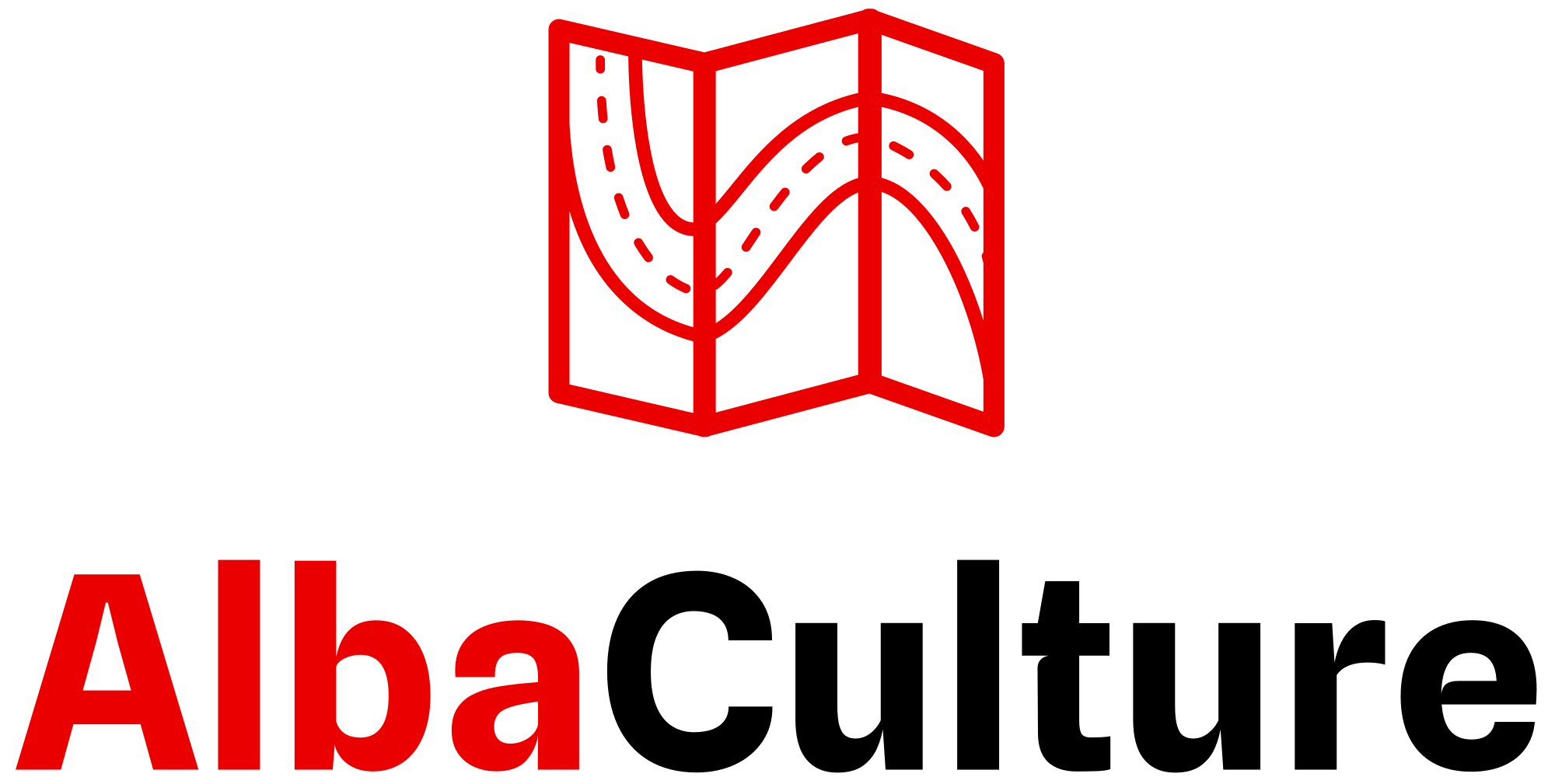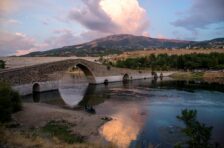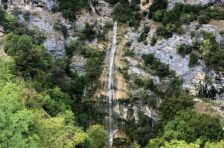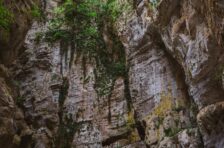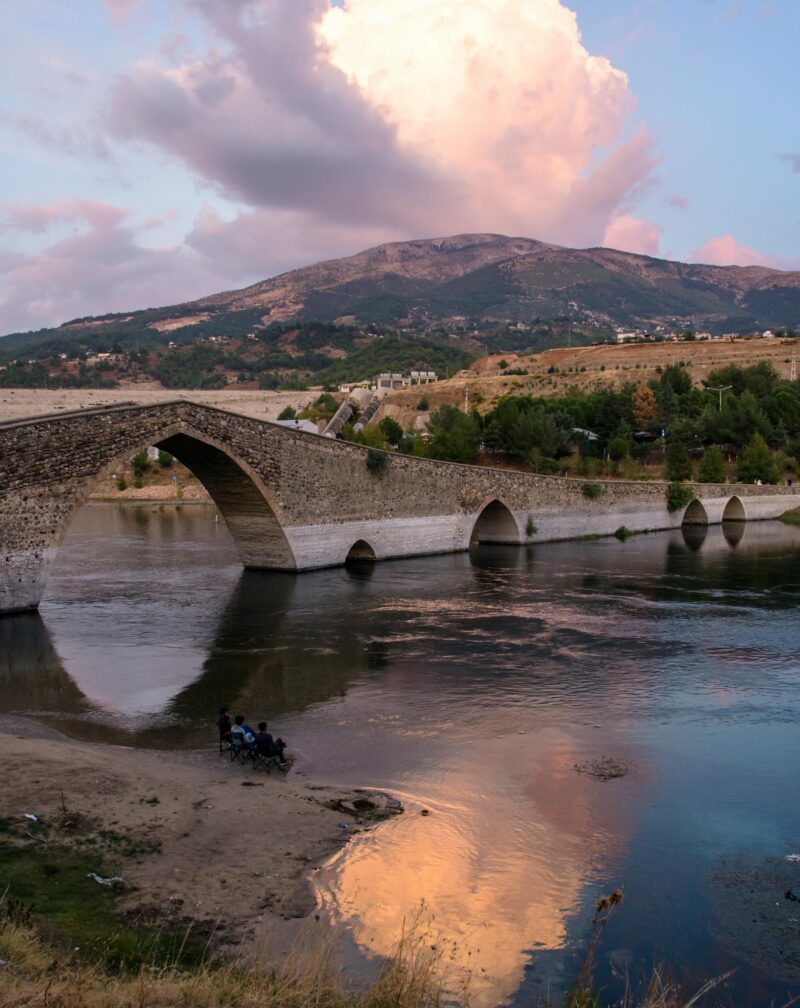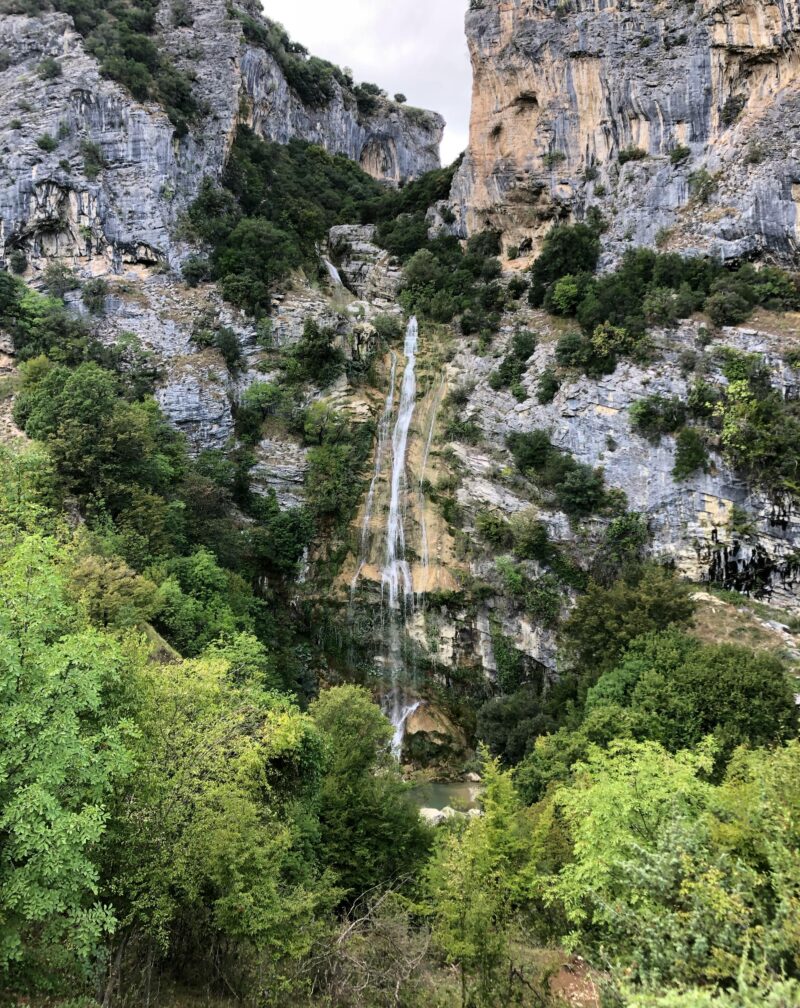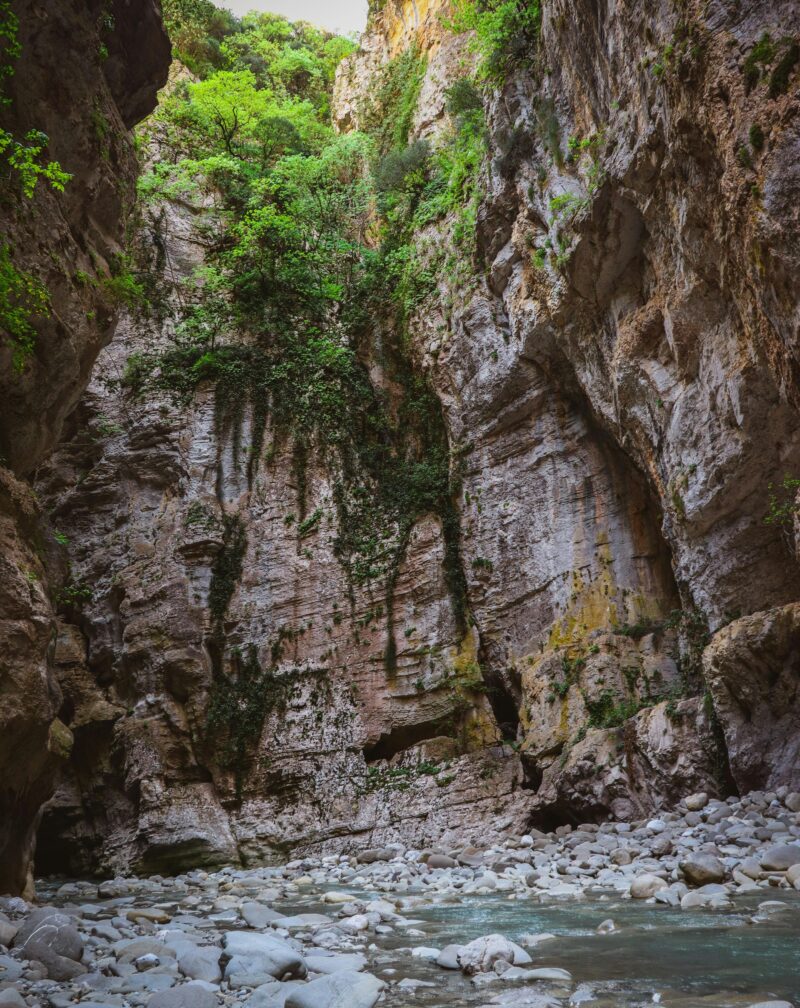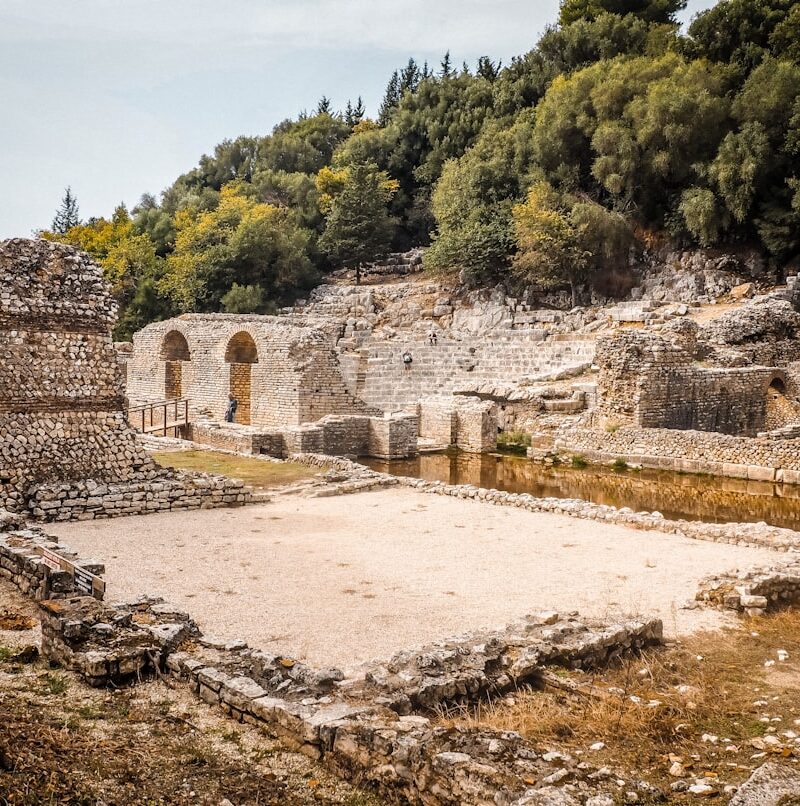The City of Serenades
Korçë sits at 850 meters elevation on a plateau surrounded by mountains, geographically and culturally distinct from coastal or central Albania. The city feels different—cooler literally and figuratively, more reserved, more intellectually oriented.
Albanians call it the “City of Serenades” for traditional music culture, though that’s somewhat romanticized now. It’s also known for being Albania’s cradle of education, having the first Albanian-language school, and maintaining strong cultural identity through various occupations and regimes.
Old Bazaar (Pazari i Vjetër)
The bazaar represents Korçë’s Ottoman past preserved in a working marketplace. It’s not large or heavily touristed, which keeps it authentic.
Traditional shops line cobblestone lanes—narrow passages between low buildings with overhanging roofs. Architecture is distinctly Korçë style, different from bazaars in Shkodër or Gjirokastër.
You’ll find:
- Rug and carpet sellers (Korçë is known for carpet production)
- Copper work shops
- Traditional clothing
- Food vendors selling local products
- Small cafes where merchants gather
The bazaar serves local residents primarily. Tourists are welcome but not the target market. This means prices are reasonable and interaction feels natural.
Walking to the bazaar early in the morning when shops are opening, vendors setting up, offers the best atmosphere. Late afternoon brings different energy—merchants finishing days, families shopping for dinner ingredients.
Museum of Medieval Art
This museum houses Albania’s most important collection of Orthodox icons and religious artifacts—over 6,500 pieces spanning centuries.
The collection includes:
- Icons from 14th-20th centuries
- Religious manuscripts and books
- Church decorations and ritual objects
- Works from southeastern Albanian churches
- Examples showing evolution of icon painting styles
Even non-religious visitors appreciate the artistry. The skill in these paintings—expressive faces, rich colors, gold leaf work, narrative complexity—transcends religious function into art.
English information exists but is limited. Having a guide helps interpret iconography and artistic techniques.
Entry costs around 200 lek. Open daily except Mondays typically. Allow 1-2 hours.
First Albanian School Museum (Mësonjëtorja)
This small museum occupies the building where Albania’s first Albanian-language school opened on March 7, 1887. The date is celebrated nationally now.
Under Ottoman rule, Albanian language education was forbidden. Opening this school was an act of resistance and nationalism. It marked beginning of Albanian National Renaissance—movement to preserve and promote Albanian language, culture, and eventual independence.
The museum preserves:
- Original classroom
- School materials and textbooks
- Photos and documents from early Albanian education
- Information about teachers and students
- Context about Ottoman policies and Albanian resistance
For Albanians, this site holds deep significance—foundation of modern Albanian national identity through education.
For visitors, it provides historical context about how Albanians maintained identity despite centuries of foreign rule.
Entry is a few hundred lek. The museum is small—30-45 minutes covers it thoroughly.
Resurrection Cathedral
Large Orthodox church built in 1992 after communism’s fall. It’s one of Albania’s biggest Orthodox churches, built in traditional Byzantine style.
The interior is impressive—frescoes, iconostasis (icon screen), dome, chandeliers. Everything follows Orthodox tradition while being completely modern construction.
The cathedral is an active place of worship. Attending Sunday Liturgy provides experience of Orthodox Christianity in Albania—chanting, incense, standing (no pews), icons, ritual.
Visitors welcome outside services. Dress modestly. Photography rules vary—ask before photographing inside.
Mirahori Mosque
One of Korçë’s oldest mosques, dating from 15th century. It shows early Ottoman architecture with simple, elegant design.
The mosque was closed during communism and partially damaged. Post-1991 restoration brought it back to function.
It’s not elaborate like some Ottoman mosques but has historical importance as one of earliest in Korçë. The neighborhood around it preserves the old-town character.
Korçë Brewery
The brewery produces Albania’s most famous beer—Korça Beer, founded in 1928. It’s a point of local pride and a legitimate tourism attraction.
Brewery tours (when available) show:
- Production facilities
- Brewing process from malting to bottling
- History of Albanian brewing
- Quality control procedures
- Tasting of various Korça varieties
Korça beer has won awards at Belgian beer festivals, which Albanians mention proudly—recognition that Albanian product can compete internationally.
The tasting session includes Original, Dark, and seasonal varieties. You’ll learn tasting techniques, flavor profiles, and food pairings.
Tours must be arranged in advance—contact brewery or ask through hotels/tourism office. Cost is around 500-800 lek including tasting.
Sunday tours often don’t operate due to reduced production schedule.
Boulevard Republika
Korçë’s main promenade lined with cafes, shops, and French-era architecture. The boulevard has a certain elegance—wide sidewalks, trees, restored buildings.
French influence shows in architecture (France briefly controlled Korçë region 1916-1920). Buildings have Art Nouveau elements unusual in Albania.
The boulevard is Korçë’s corso—evening strolls, coffee culture, social meeting point. Weekend evenings bring crowds, particularly young people and families.
Sitting at a cafe watching boulevard life is an essential Korçë experience. The city’s reputation for intellectual culture manifests itself in conversations overheard discussions seem more literary and philosophical than commercial.
National Museum of Education
Museum documenting Albanian education development, appropriate given Korçë’s role in Albanian education history.
Exhibits include:
- Historical school materials
- Textbooks from various periods
- Teaching methods and tools
- Evolution from Ottoman restrictions through independence and communism to democracy
- How education shaped national identity
It’s specialized interest—not everyone finds educational history compelling. But for those interested in how nations form identity through education, it’s worthwhile.
Entry around 200 lek. Allow 1 hour.
Illyrian Tombs
Archaeological sites near Korçë showing pre-Roman Illyrian culture. Several burial tumuli (mounds) have been excavated, revealing artifacts now in museums.
The sites themselves are open air—earthen mounds, excavation remains, information panels. They’re not spectacular visually but historically significant showing Illyrian presence before Greek and Roman influence.
Best visited with a guide who can explain archaeological findings and Illyrian culture. Otherwise, they’re just mounds of earth to untrained eyes.
Located outside the city, requiring transport. Not always included in standard Korçë visits.
Drilon National Park
About 30 minutes from Korçë, Drilon features natural springs feeding clear pools and streams. Walking paths wind along the water, restaurants are built over springs, gardens surround the area.
It’s popular with Albanian families on weekends but quiet weekdays. The setting is peaceful—spring water is so clear you see every pebble, fish swimming, reflection of trees.
Restaurants serve trout and local cuisine. Sitting at a table literally over spring water while eating fresh fish is a pleasant experience.
It’s a good half-day trip if the weather is nice. Not essential but enjoyable, particularly in summer heat.
Day Trips from Korçë
Voskopojë Mountain town 20 kilometers from Korçë. In the 18th century, Voskopojë was a major Balkan city—perhaps 35,000 people, wealthy trading center, cultural hub.
Destruction through raids and fires (1769-1789) left it shadow of former self. Now it’s small village with extraordinary churches containing rare frescoes:
- St. Nicholas Church (1721)
- St. Athanasius Church (1724)
- Others in various states of preservation
The contrast between past grandeur and present quiet is striking. Churches preserved show what was lost—skilled frescoes, architectural ambition, cultural sophistication.
Winter brings snow making access difficult. Summer and autumn are ideal.
Pogradec and Lake Ohrid About 1.5 hours from Korçë, Pogradec sits on Lake Ohrid shore. The lake is among the world’s oldest and deepest, with unique endemic species.
The town itself is a modest resort area. The lake is the attraction—clear water, mountain backdrop, beaches, and famous koran (trout) restaurants.
Lin village nearby has an ancient church with mosaics worth visiting.
Prespa Lakes Smaller, more remote than Ohrid. Great Prespa lake is shared between Albania, Greece, and North Macedonia. It’s an important birdwatching site with pelicans breeding.
The Albanian shore is quiet, undeveloped, beautiful. Villages maintain traditional life. It feels remote and peaceful.
This requires most of a day and isn’t heavily touristed. For people seeking off-beaten-path destinations, it’s worthwhile.
Food in Korçë
Korçë cuisine includes mountain and agricultural elements:
Lakror – Korçë-style pie with leeks, fillo pastry layers, distinct from other Albanian pies
Tavë Kosi – baked lamb with yogurt, found throughout Albania but Korçë version is well-regarded
Mountain dishes – using local herbs, cheeses, lamb
Trout – from nearby lakes and fish farms
Beer – Korça beer with meals is standard
Restaurants in old town and along Boulevard Republika offer traditional and modern Albanian cuisine. Prices moderate—800-1,500 lek for mains.
Practical Information
Getting There:
- From Tirana: 3 hours by bus (700-800 lek)
- From Pogradec: 1.5 hours
- From Greece (Kapshticë border): 1 hour
Climate: Korçë is significantly cooler than lowland Albania due to elevation. Summer temperatures are pleasant (not extreme heat). Winter brings snow and cold—below freezing is common.
Bring warmer clothing than you’d pack for coastal Albania, even in summer. Evenings cool down noticeably.
Where to Stay: Hotels range from budget to comfortable. Korçë isn’t heavily touristed, so advance booking is less critical except during festivals or holidays.
How Long: One night (one full day) covers main city attractions. Two nights allow a day trip to Voskopojë or lake areas.
When to Visit: Spring and autumn ideal—moderate temperatures, beautiful countryside. Summer is pleasant (cooler than the coast). Winter brings snow which is atmospheric but cold.
The Korçë Character
Korçë feels culturally distinct within Albania. The elevation, geographic isolation, historical role in Albanian education, and mixed religious identity (Muslim, Orthodox, and Bektashi communities) create unique atmosphere.
The city is proud of intellectual and cultural heritage—first school, first breweries, traditional music, educated population. This pride manifests in maintaining libraries, museums, cultural events.
People here seem more reserved than coastal Albanians—less immediately effusive but equally welcoming once conversation starts. The style is different, perhaps influenced by mountain culture and educational traditions.
The beer culture is real. Korça beer is genuinely good, and locals drink it with pride. Beer gardens and traditional taverns maintain brewing culture dating back decades.
Music culture, while not as prominent as the “City of Serenades” nickname suggests, still exists. Traditional serenades (sung with musical accompaniment, often romantic themes) were historically important. Modern Korçë maintains its musical identity through festivals and local artists.
The Armenian community historically contributed to Korçë’s character. While numbers decreased, Armenian influence remains visible in churches, cuisine, and cultural memory.
Korçë isn’t on most Albanian itineraries. It’s off the main tourist circuit connecting Tirana to coastal attractions. This means fewer visitors but also more authentic experience.
For travelers interested in Albanian culture beyond beaches and UNESCO towns, Korçë rewards the detour. It’s Albania’s intellectual and cultural side, less immediately dramatic than stone cities or ancient ruins but equally valid representation of the country’s complexity.



